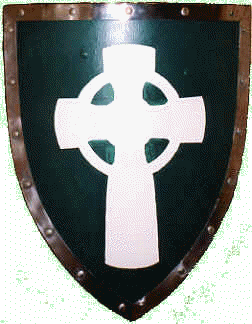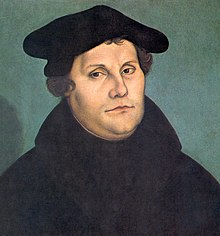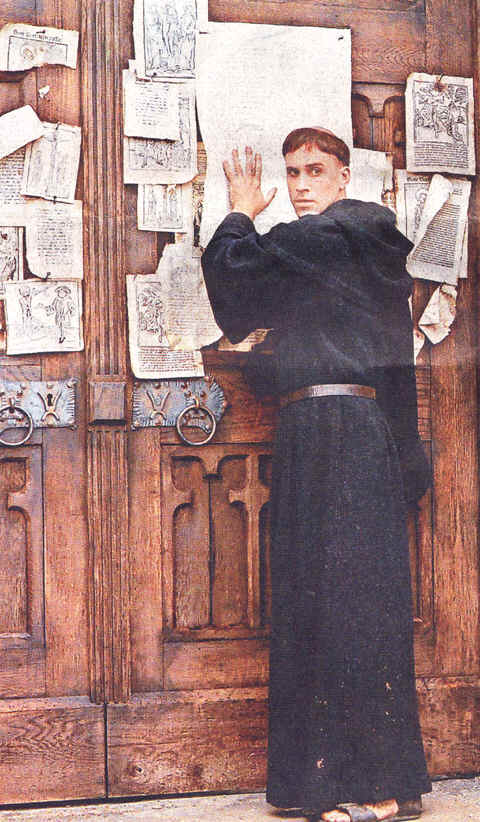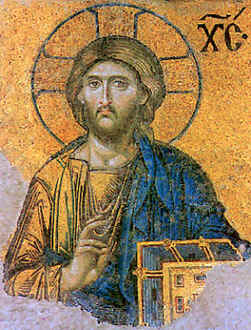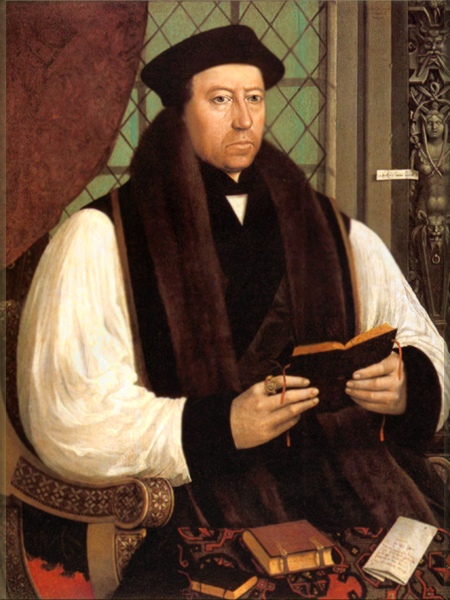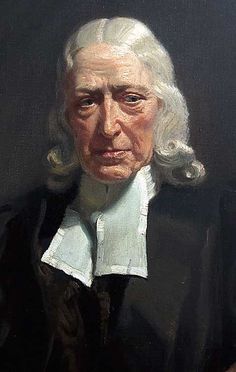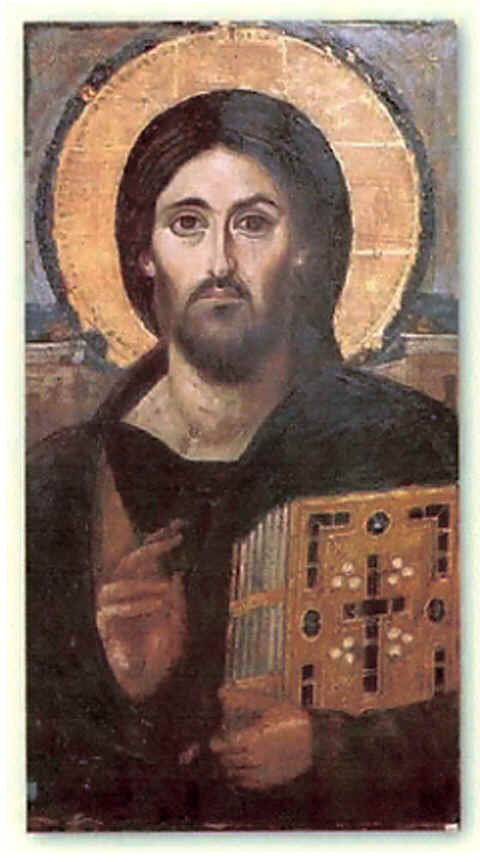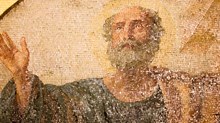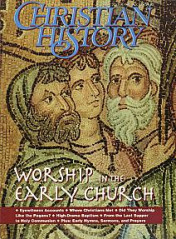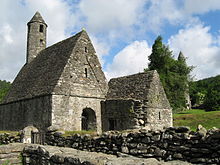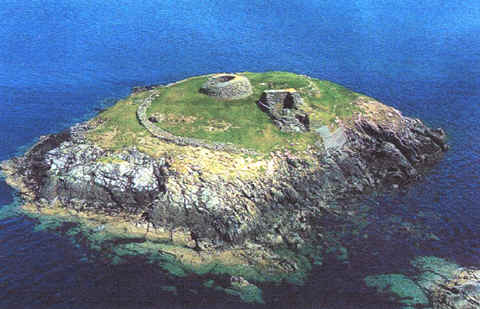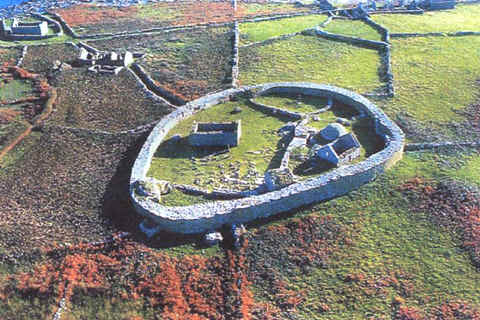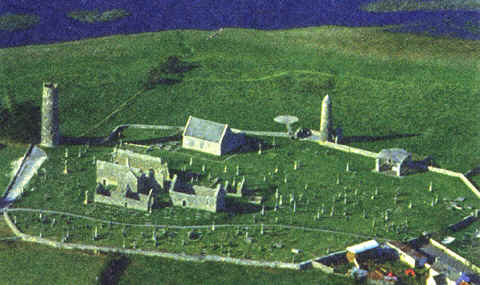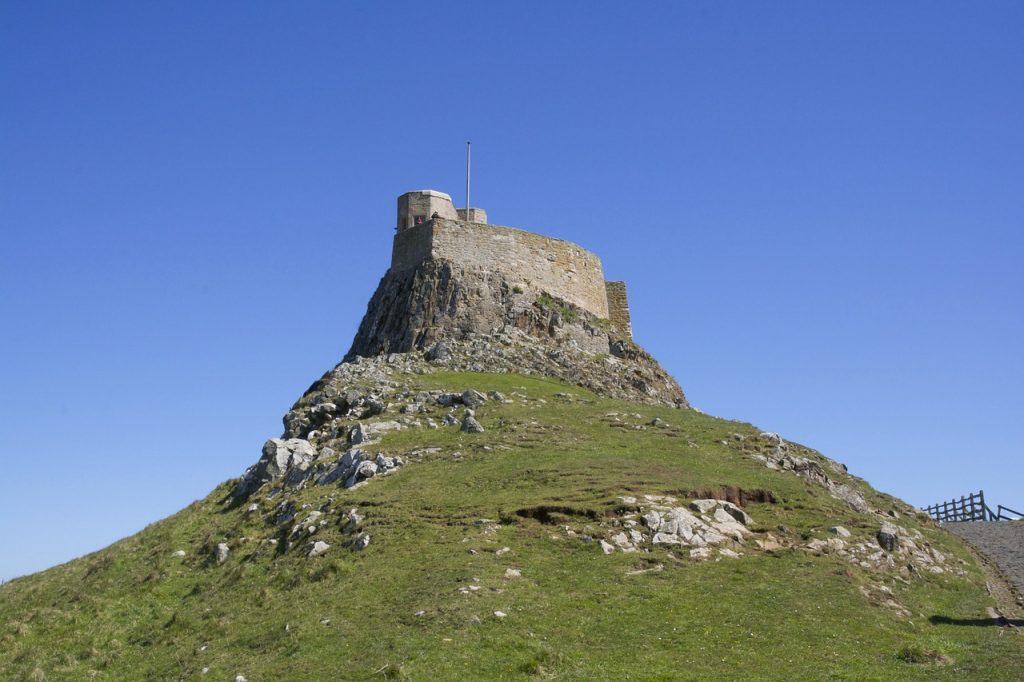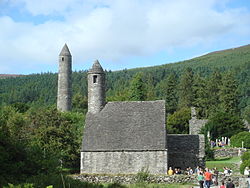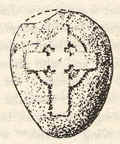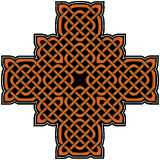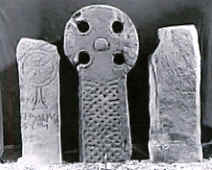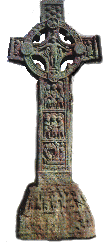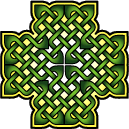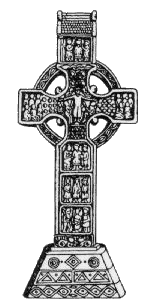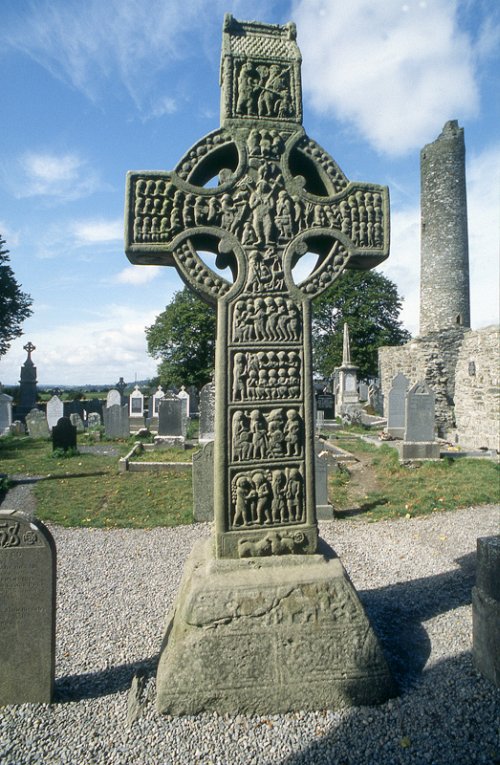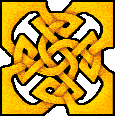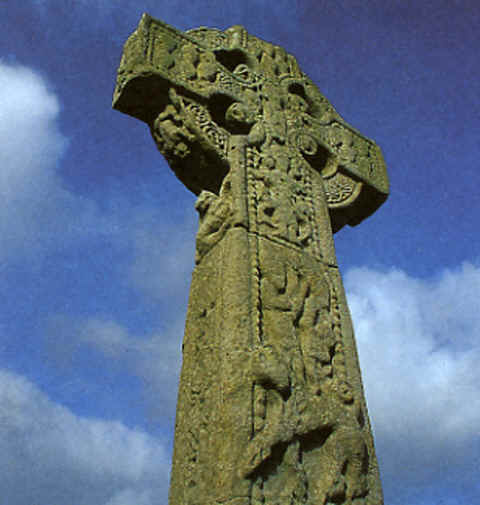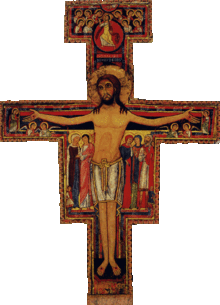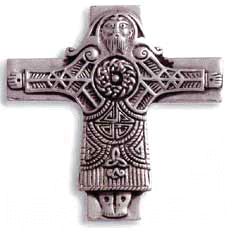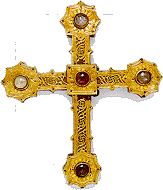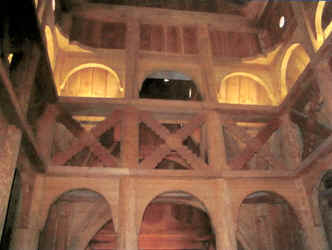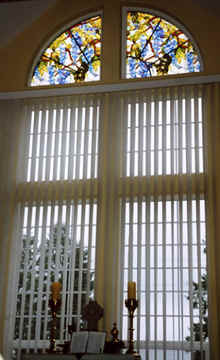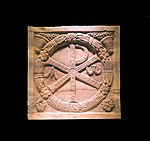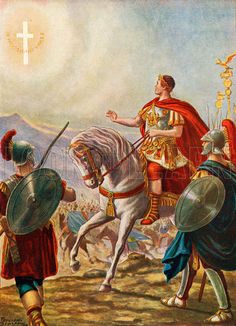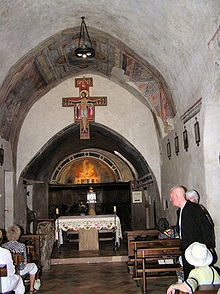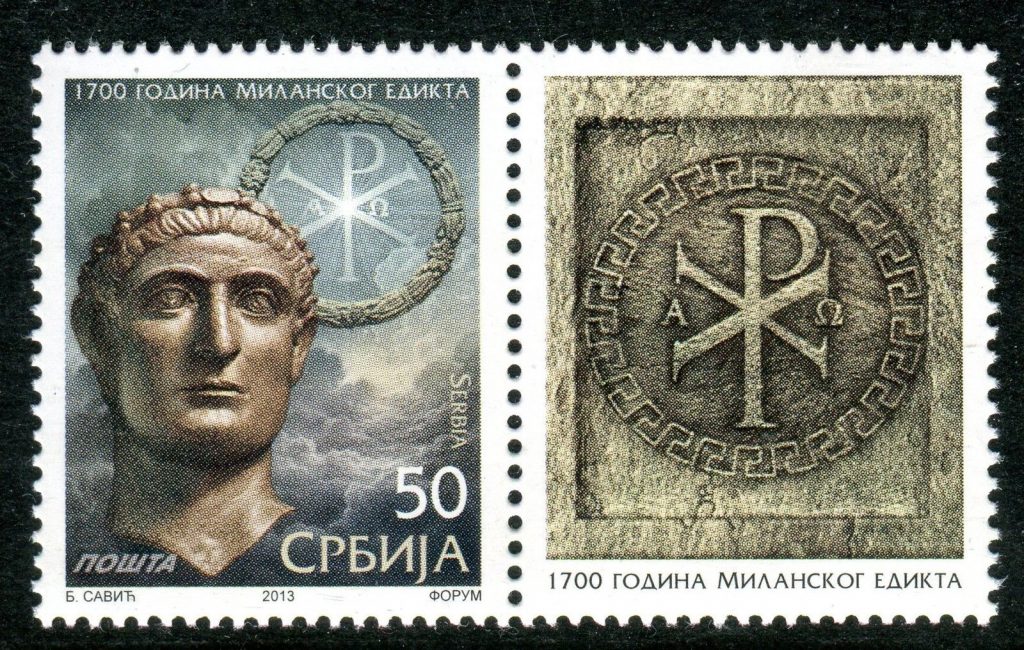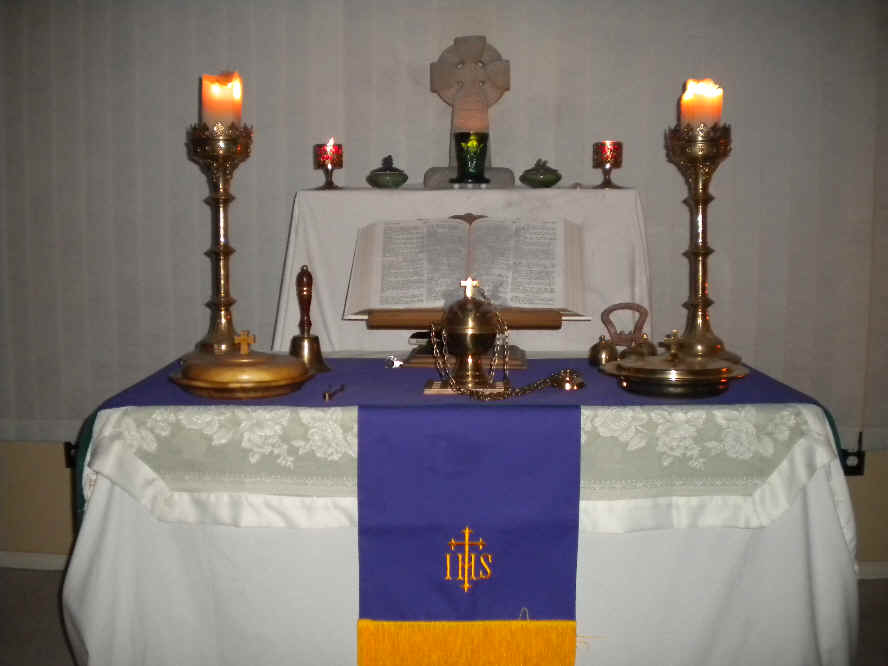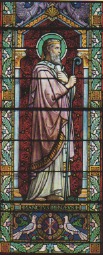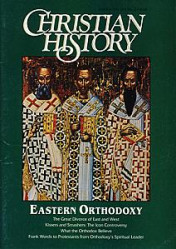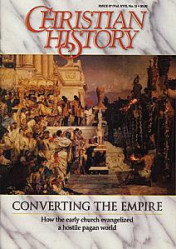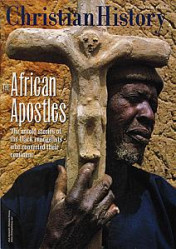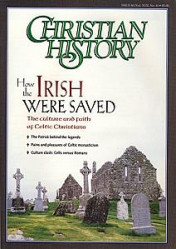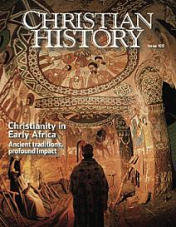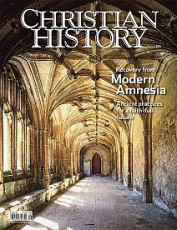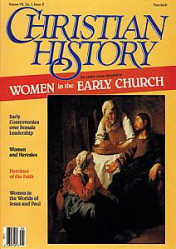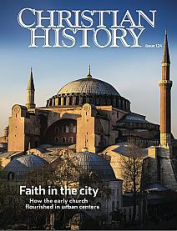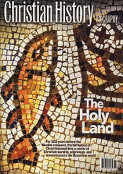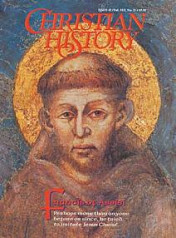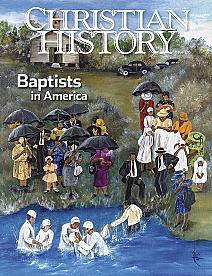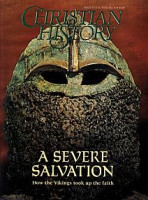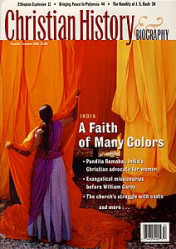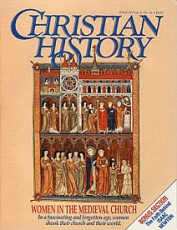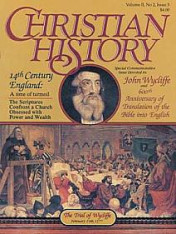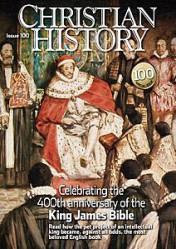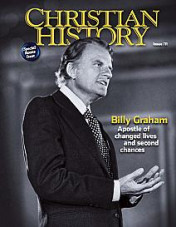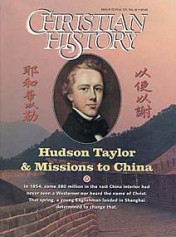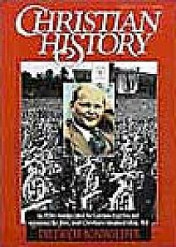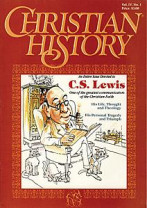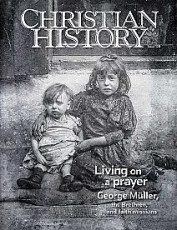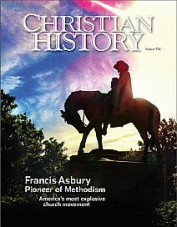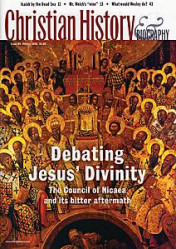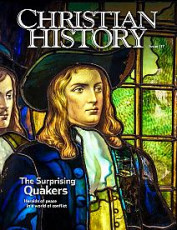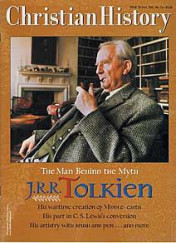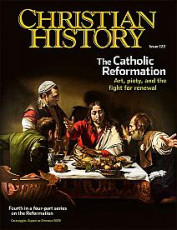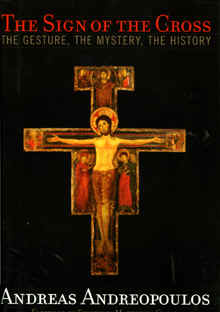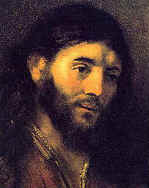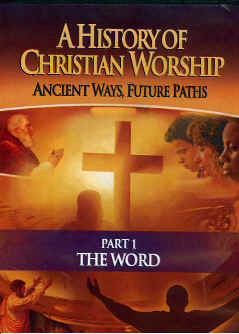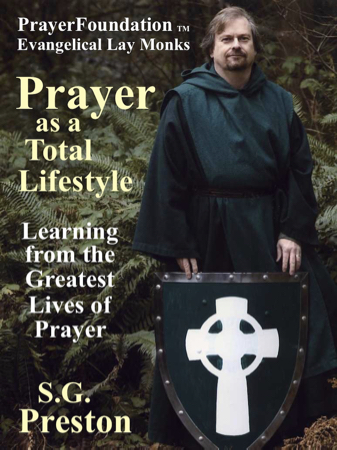By Lay Monk S.G. Preston
(Left & Lower Center) Protestant Reformers Martin Luther and Thomas Cranmer advocated making the Sign of the Cross, as did John Wesley (Upper Right), Founder of the Methodists and Evangelist of “The Great Awakening” Revival in Colonial America. Mosaic of Christ and Fresco of the Apostle Paul from the 300’s A.D. (Upper Center).
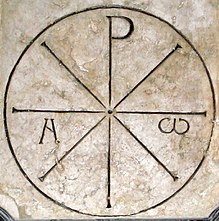
Even earlier, Circa 200 A.D., Tertullian had already written:
“We Christians wear out our foreheads with the Sign of the Cross.”[








“Chain eil thu tuilleach ‘s sean airson ionnsachadh fhathast.”
“We are to learn as long as we live.”
-Old Gaelic Saying
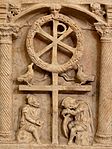

The Sign of the Cross: Early Church & Protestants
The Sign of the Cross is a Gesture of Dedicating to God, and of Blessing.
It brings to remembrance the Cross, while invoking the Trinity.
It is made by tracing the shape of a cross on one’s own body with the right hand,
most often accompanied by spoken or silent praying of the Trinitarian formula from Matthew 28:16…
“In the Name of the Father, and of the Son, and of the Holy Spirit. Amen.”
The Two Main Ways to make The Sign of the Cross:
One of them, with three fingers, right to left — is used in the Eastern Orthodox Church, in the Church of the East, and in the Eastern Rite Roman Catholic Churches.
The other — left to right to middle, other than with three fingers — is the one used in the Latin Rite (Roman Catholic) Church, in the Lutheran, Anglican, and Methodist Churches, and in Oriental Orthodoxy.
From the writings of Athanasius of Alexandria (269-373 A.D.), we see that it was originally done from right to left, in the Nicene Church.
It was changed to a left to right motion in the Roman Church sometime during the Middle Ages.
It was done with two fingers among Orthodox until the Church in Greece changed it to three fingers in the 1500’s.
This was one of the changes that the “Old Believers” in Russia rejected, and have continued to reject to the present time.
This is why Christ is always shown in all of the older icons with two fingers raised in blessing, and His thumb touching His fourth and fifth fingers (See the two Christ Icons At and Near the Top of this Page).
So how should you make the Sign of the Cross, if you should decide to make it?
In your own Church, you should make the Sign of the Cross however your Church makes it, if it does.
And if the Church you belong to, or are visiting, doesn’t make it, then don’t make it when in those Churches.
This is the gist of the advice Bishop Ambrose of Milan gave to St. Augustine’s mother, Monica (although it was specifically regarding Fast days),
and which has since entered into the language paraphrased as the well-known and often used saying:
“When in Rome, do as the Romans do.”
The Early Church Made the Sign of the Cross
The Cappadocian Father and Bishop, St. Basil the Great (329-379 A.D.), wrote that The Sign of the Cross was a Christian custom that had originated with the Apostles:
“…who taught us to mark with the Sign of the Cross those who put their hope in the Name of the Lord.”
_________________________________
The Sign of the Cross in the Early Church was Originally Made with the Right-Hand Thumb Across the Forehead Only.
Around 200 A.D., in the City of Carthage in North Africa (modern Tunisia), Tertullian wrote:
“We Christians wear out our foreheads with the Sign of the Cross.”
The larger movements of the hand over the entire upper body, as we know them today, were not generally practiced until the persecutions ceased.
This occurred when the Emperor Constantine issued the Edict of Milan in 313 A.D., making Christianity legal.
Tertullian also said that making the sign of the cross was “an ancient practice.”
People do not call something that began during their own lifetimes, or even shortly before, an “ancient practice.”
So when was Tertullian born? — c. 155 A.D.
And when did the last of the Apostles live until? The Apostle John died at the age of 93 or 94 c. 100 A.D.
So making the Sign of the Cross can be shown to go back to immediately after Apostolic times, but if Basil is correct, it goes back even earlier.
_________________________________
The Apostle Paul Taught:
“Therefore, brethren, stand fast, and hold to the traditions which you have been taught, whether by the words of our mouth, or by our epistles.”
–2 Thessalonians 2:15
Athanasius, Bishop of Alexandria (c. 293 – 373 A.D.), Wrote:
“By the signing of the holy and life-giving cross, demons and various scourges are driven away.
For it is without price and without cost and praises him who can say it.
The holy fathers have, by their words, transmitted to us, and even to the unbelieving heretics, how the two raised fingers and the single hand reveal Christ our God in His dual nature but single substance.
The right hand proclaims His immeasurable strength, His sitting at the right hand of the Father, and His coming down to us from Heaven.”
Protestants Making the Sign of the Cross
The Sign of the Cross dates from the time of the Early Church, no later than 100 – 155 a.D., and its use may have begun even earlier.
Nevertheless, the Reformed Churches mostly rejected it.
Martin Luther, on the other hand, retained it, and encouraged its use for families and children.
Luther’s Small Catechism states its use is expected in Morning and Evening Prayer.
In his Catechism of 1529, he instructed fathers to teach their households the following:
“In the morning, when you rise from bed, sign yourself with the holy cross and say, ‘In the name of the Father, the Son, and the Holy Spirit. Amen.’
…At night, when you go to bed, sign yourself with the holy cross and say, ‘In the name of the Father, the Son, and the Holy Spirit. Amen.’”
Lutheran Pastors use it throughout the Service.
The Laity use it when entering the Church, at the Trinitarian Invocation (as the Eastern Orthodox also do), at the Benediction, after receiving Communion, and at the end of reciting the Nicene or Apostle’s Creeds.
The Anglican Oxford Movement revived it, and it is commonly practiced by the lay members of that Church.
The Book of common Prayer has required its use for baptism since 1604.
Ministers and Laity in Methodist Churches sometimes use it.
John Wesley instructed Ministers to use it when baptizing, and on the foreheads of the Laity on Ash Wednesday, and the same on those seeking healing, with the addition of oil.
Methodist lay people are encouraged by their Bishops to use The Sign of the Cross during their private times of prayer, and some use it both before and after Communion.
Some Methodist Ministers use it when blessing the Congregation at the end of the sermon, and at the end of the Service.
Tertullian & C.S. Lewis
c. 201 A.D., Tertullian wrote:
“In all our travels and movements, in all our coming in and going out, in putting on our shoes, at the bath, at the table,
in lighting our candles, in lying down, in sitting down, whatever employment occupies us, we mark our foreheads with the Sign of the Cross.”
In his book, The Screwtape Letters, C.S. Lewis has the Senior Devil Screwtape write to the Junior Tempter Wormwood about how to tempt humans, in the area of the relationship between prayer and kneeling:
“At the very least, (humans) can be persuaded that the bodily position makes no difference to their prayers,
for they constantly forget, what you must always remember, that they are animals and that whatever their bodies do affects their souls.”
Lewis makes an important point:
Kneeling reminds us who we are praying to, thereby prompting us to be more prayerful.
In the same way, making The Sign of the Cross reminds us of the one who bought us with his own body, and the reminder prods us toward holiness.
Sources:
De Corona; Tertullian (30) Writings of Origen Catholic Encyclopedia The Faith of Catholics; Rev. Chapel, Editor, (Fr. Pustet & Co., 1885)
Luther; Hartmann Grizar (B. Herder Book Co., 1919) Nicene and Post-Nicene Fathers; Philip Schaff, Editor, (Eerdmans, 1980)
The Screwtape Letters; C.S. Lewis Sign of the Cross (Wikipedia)
AndREw MuRRay / E.M. bOundS / SAyinGS Of tHE dESERt fAtHERS:

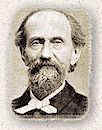


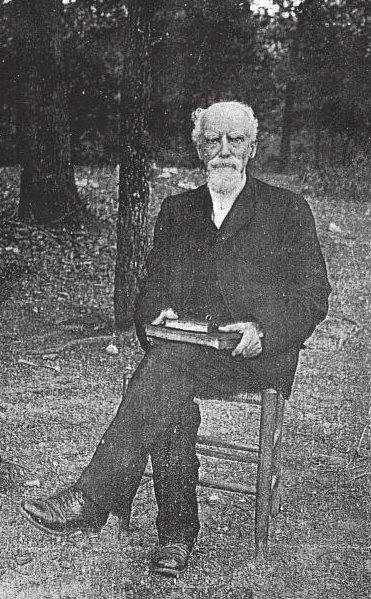
A dead Christ I must do everything for; a living Christ does everything for me.”
-Andrew Murray (From His Book: Jesus Himself)
________________________________
“Prayer draws its very life from the Bible, and has no standing ground outside of the warrant of the Scriptures.
Its very existence and character is dependent on revelation made by God to man in His holy Word.
Prayer, in turn, exalts this same revelation, and turns men toward that Word.
The nature, necessity and all-comprehending character of prayer, is based on the Word of God.”
-E.M. Bounds (The Necessity of Prayer)
__________________________________
“An elder replied, ‘I tell you, many have ruined their bodies with no discernment and gone away without finding anything.
We may have evil-smelling breath because of our fasting, we may know the Scriptures by heart, we may recite all the psalms…
and still lack what God is looking for – love and humility.’”
-Sayings of the Desert Fathers
______________________________________

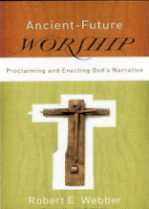
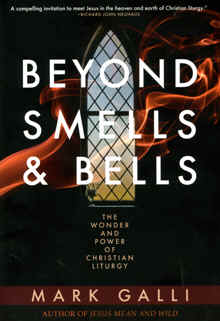
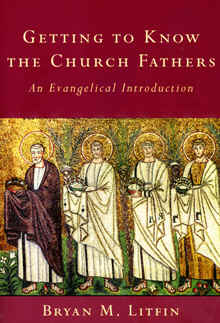
This Website: PrayerFoundation Evangelical Lay Monks ™ Built by: S.G. Preston Ministries ™
Copyright © 1999-2024 S.G. Preston. All Rights Reserved.
Photos & Text Copyright © 1999-2024 S.G. Preston. All Rights Reserved.
